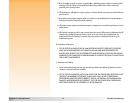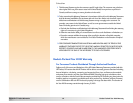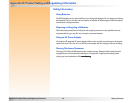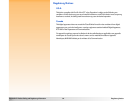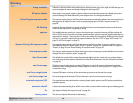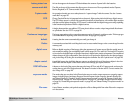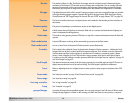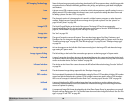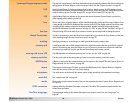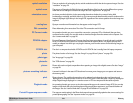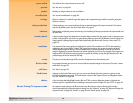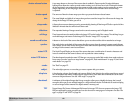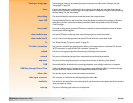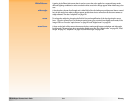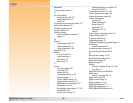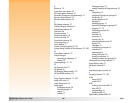
HP 618 Digital Camera User’s Guide 119 Glossary
Landscape Program exposure mode
The exposure mode setting in the Photo Assist menu that automatically optimizes the camera settings for
taking pictures of distant subjects, such as landscape scenes. See also “exposure modes” on page 116.
LCD
Liquid Crystal Display. A display technology that is used on digital cameras. An LCD displays numeric
characters and/or icons to communicate the camera's status, such as the particular settings that you have
made for taking a picture. See also “image LCD” on page 118 and “status LCD” on page 122.
LED
Light Emitting Diode. An indicator on the camera that shows the status of some feature or process by
either lighting solid or blinking on and off.
lens
One or more pieces of optical glass or similar material designed to collect and focus rays of light to form
a sharp image on the film (for traditional film cameras) or the CCD (for digital cameras). Lenses are rated
according to their maximum aperture (smallest possible f-number) and their focal length (usually
specified in millimeters). See also “aperture” on page 115, “CCD” on page 116, and “f-number” on page 117.
live view
Using the image LCD on the back of the camera to view the picture subject before taking the picture.
Manual Focus mode
The focus mode that you set in the Photo Assist menu that lets you control the focus distance of the lens
when capturing images. See also “Auto Focus mode” on page 115.
marking
Specifying an image or several images to which you will then apply a single action.
memory card
A small removable, non-volatile storage medium for digital information that acts as the film in a digital
camera. The memory card stores the images so you can process or view them at a later time. Make sure
the camera is powered off any time you remove the memory card from the camera.
memory card access LED
The LED that blinks to indicate the memory card is in use. See also “LED” on page 119.
memory card door
The door on the side of the camera that you open to access the memory card in the camera.
MENU button
A button on the back of the camera that lets you view menus on the image LCD in the Capture, Review, or
Playback mode. See also “modes” on page 119.
menus
These appear on the image LCD when you press the MENU button in the Capture, Review, or Playback
mode and are used to choose and set camera settings.
microphone
The audio device on the front of the camera used to record sound that is then attached to an image.
mode dial
See “camera mode dial” on page 116.
modes
These set the way the camera functions. There are four operational modes: Capture, Review, Playback, and
PC Connect.
NTSC connection
National Television Standards Committee connection. The video (TV) connection standard used in the
United States and Japan.
One Shot image type
The image type setting on the camera that captures one image at a time. See also “image type” on
page 118.



